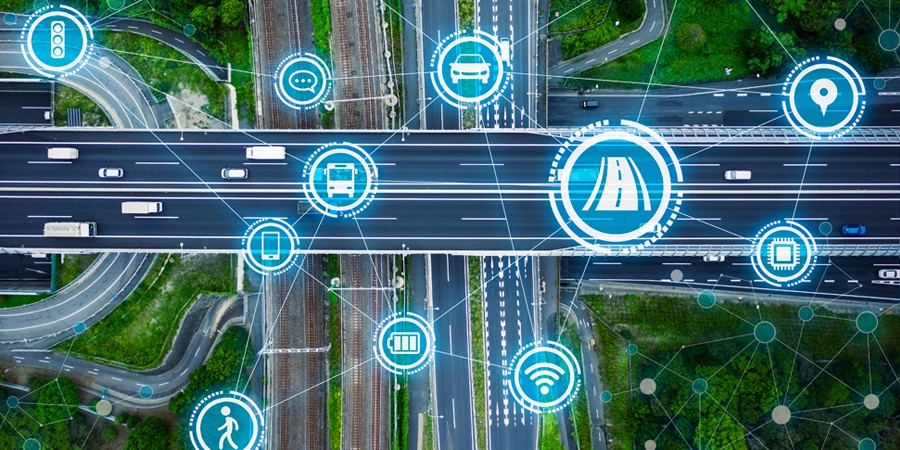We live in an era in which the world has become more modern and advanced. Managing the increasing traffic is a big problem globally. A Smart Transportation System (STS) provides solutions to such problems with the help of new technologies; it is an attempt to integrate modern innovations into transportation systems, technologies that include cloud computing, wireless communication, location-based services, computer vision and other tools to improve mobility.
A simple example of how smart devices have changed transportation is the role of traffic lights on the road. Time-controlled technology helps avoid collisions while smart lights equipped with sensors and appropriate algorithms detect commuters nearby and cycle through the lights accordingly to make transit safer and faster. The idea behind intelligent transportation systems is to create a network that connects vehicles, humans and the city’s infrastructure itself by using new and emerging technologies to make navigating a city more convenient, more cost-effective and safer. So, what emerging technologies are facilitating these new opportunities?
According to the BIA Communications survey, 83% of respondents agree that intelligent mobility systems are integral to smart cities. 5G and IoT are the main drivers of this phenomenon. The first can be used to control and manage almost any physical machine by integrating low-cost sensors and controllers, and the latter provides the high-speed communications needed to manage and control transportation systems in real time with minimal latency.
Main Benefits
Smart transportation is not just a theory for the future; it is being implemented today, providing its benefits to several cities, while its successes and failures are being studied to improve systems in new locations. By using this smart phenomenon right, several public benefits emerge:
- Safer: Combining machine learning with IoT and 5G has proven to reduce the “human factor” in accidents, as computers don’t get distracted or tired.
- Managed: Using intelligent transportation, administrators can not only keep track of maintenance requirements but can also identify key problem areas that need to be addressed as well as monitor operations more efficiently. After all, data collection is an important key to the responsible public management of infrastructure.
- More efficient: Improving management leads to better use; quality data can help in pinpointing some areas for improvement.
- Cost-effective: Using smart transportation reduces costs due to preventative maintenance, reduced energy consumption and fewer resources subsumed by accidents. Cost savings can also be garnered by riders when inexpensive public transit is efficient enough to compete with private vehicle ownership.
- Fast insights: Having rapid visibility and notifications of trouble spots or city-wide issues affecting traffic, public safety and emergency response systems enables city traffic management centers (TMCs) to act or communicate more effectively with other agencies and emergency responders.
Smart Transportation Market
Intelligent transportation can generally be divided into two main categories: public infrastructure and the automotive industry. As networked sensors are integrated into infrastructure and vehicles, these sectors become “smart” by enabling remote management and control, safety and efficiency.
There are several factors that are expected to drive the growth of the smart transportation market, including an increase in demand for efficient transportation networks; government initiatives promoting green fuels; and an increase in traffic congestion and road safety issues. In addition, the adoption of smart transportation systems in railways and an upsurge in the adoption of cloud services in transportation are some of the major factors anticipated to boost the market’s growth. Market growth, however, is limited by high capital investments, extensive road network database requirements, and a lack of standardized and uniform technology. The global smart transportation market was valued at $96.6 billion in 2020 and is projected to reach $251 billion by 2030, growing at a CAGR of 10.2% from 2021–2030.
In addition, COVID-19 had a huge impact on the smart transportation market. The increase in COVID-19 cases has caused chaos in the transportation industry; the transportation business has suffered a significant loss as a result of most governments adopting isolation policies. However, in the post-COVID scenario, the smart transportation market is projected to be positively impacted.
Smart transportation systems aim to evaluate, develop, analyze and integrate new sensors, information and communication technologies to improve traffic efficiency, save energy and support environmental safety and quality. ITS advancement should be developed and tested progressively, taking note of pitfalls and shortcomings as it evolves, and providing necessary solutions to improve its performance within the environment in which it is deployed.






